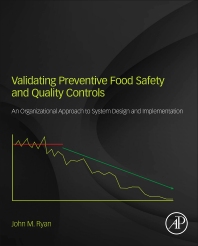Refrigerated Foods Report: Food Safety Update
How should refrigerated food processors respond to a government proposal about Listeria limits? Here’s one expert’s view.

Living with Listeria
Last month’s column explained the Food and Drug Administration’s proposed guidance on allowing a tolerance for Listeria monocytogenes in foods that do not allow its growth. This month we will explain how this is done and the impact it would have on the industry.
Providing a tolerance level for L. monocytogenes would allow governmental agencies to focus their limited resources and attention on areas of greater concern including the removal of foods that pose the greatest harm to the public. At the same time, it would allow processors to focus on the use and further development of listerial static agents and processes that prevent the pathogen’s growth in ready-to-eat foods.
In a study sponsored by the Refrigerated Foods Association (RFA), conducted in 1993, Professor Eric Johnson found decreased levels of L. monocytogenes in deli salads that contained preservatives and sufficient acidity to deter the pathogen’s growth.
Most commercially-prepared, ready-to-eat (RTE) foods are formulated using chemical barriers, such as acetic acid, sodium benzoate and potassium sorbate, which are inhibitory to the growth of pathogens. The 2005 Food Code exempts deli salads (ham, chicken, egg, seafood, pasta, potato and macaroni) prepared and packaged in a food processing plant from product dating since scientific data support the exemption due to findings that sufficient acidity and preservatives prevent growth of L. monocytogenes.
Eblen* inoculated L. monocytogenes into deli salads which were either manufactured by a retail store or by large-scale food manufacturers. Salads consisted of chicken, tuna, ham, egg, shrimp, crab, imitation crab, potato or cole slaw. Control and inoculated salads were stored up to 30 days at either refrigerated or abuse temperatures and analyzed for Listeria, titratable acidity, water activity and pH. In salads produced by large-scale food manufacturers, these products were found to contain chemical barriers to growth, and Listeria populations decreased or remained static during shelf life testing. In contrast, salads prepared by retail establishments lacked chemical preservatives; however they exhibited decomposition prior to outgrowth by L. monocytogenes.
Consequently, the FDA joint risk assessment concluded that L. monocytogenes does not grow in foods having a pH of less than or equal to 4.4; a water activity (Aw) of less than or equal to 0.92 or in frozen foods.
The guidance document concludes that refrigerated and/or RTE foods that do not support the growth of Listeria will be determined by the following:
• The food has a low pH (4.4) (some fermented products, pickles) or;
• The food has a low moisture content (water activity <0.92) (Parmesan, other hard cheeses, bacon, and dried sausages) and is normally held or consumed in the frozen state;
• Or processing involves an effective listeristatic control measure that demonstrates that control of Listeria has been achieved. This is accomplished when shelf life and challenge studies demonstrate a less than 1 log increase of L. monocytogenes in replicate trials using test foods or formulations.
The RFA has developed a protocol that not only standardizes the determination of shelf-life but provides a procedure to determine the food products ability to support the growth of Listeria. This study is available at www.refrigeratedfoods.org/rfaprotocol.html.
*Eblen, B.S., R.C. Whiting and A.J. Miller. 2002. IAFP Abstracts
Looking for a reprint of this article?
From high-res PDFs to custom plaques, order your copy today!





